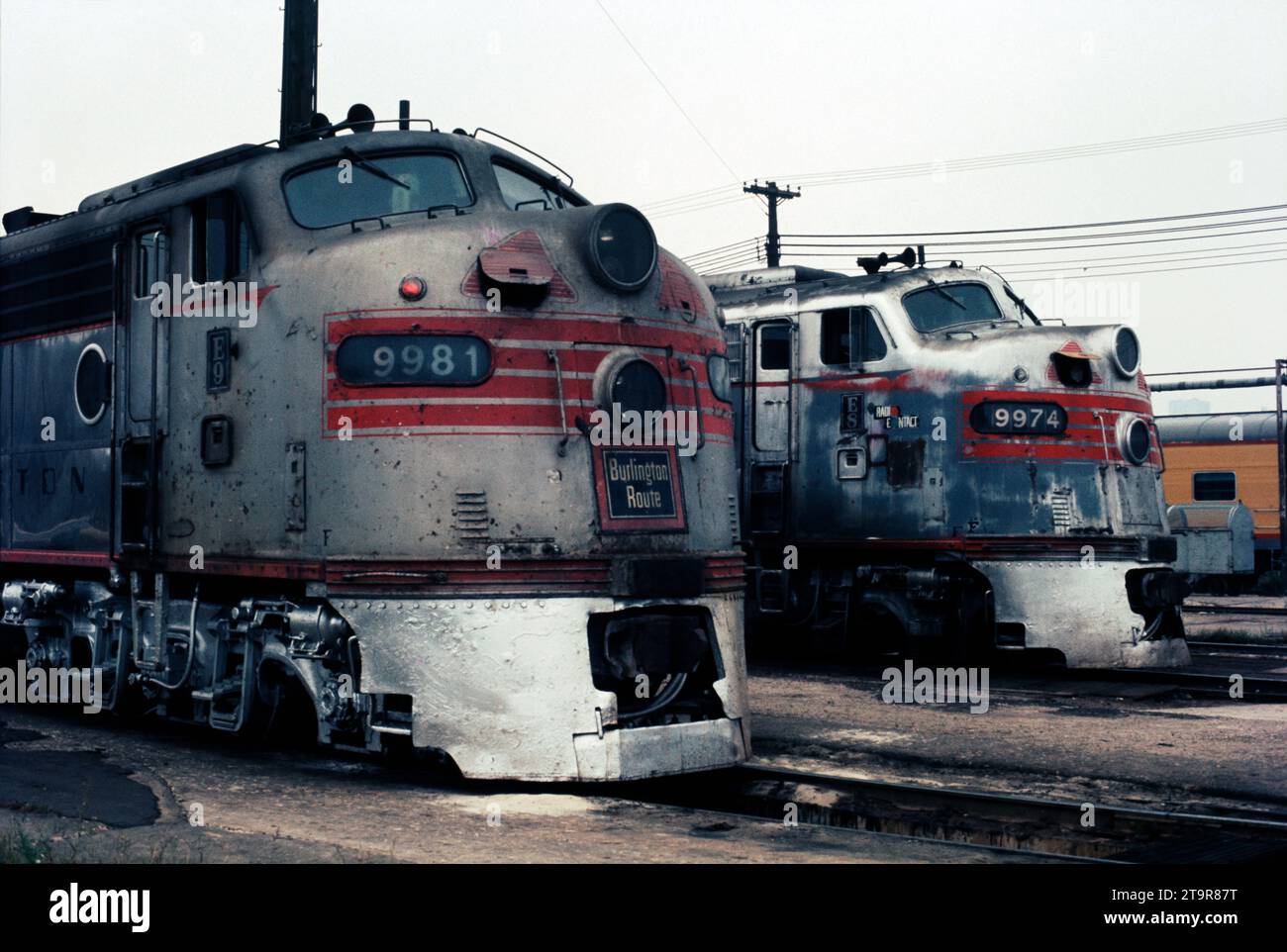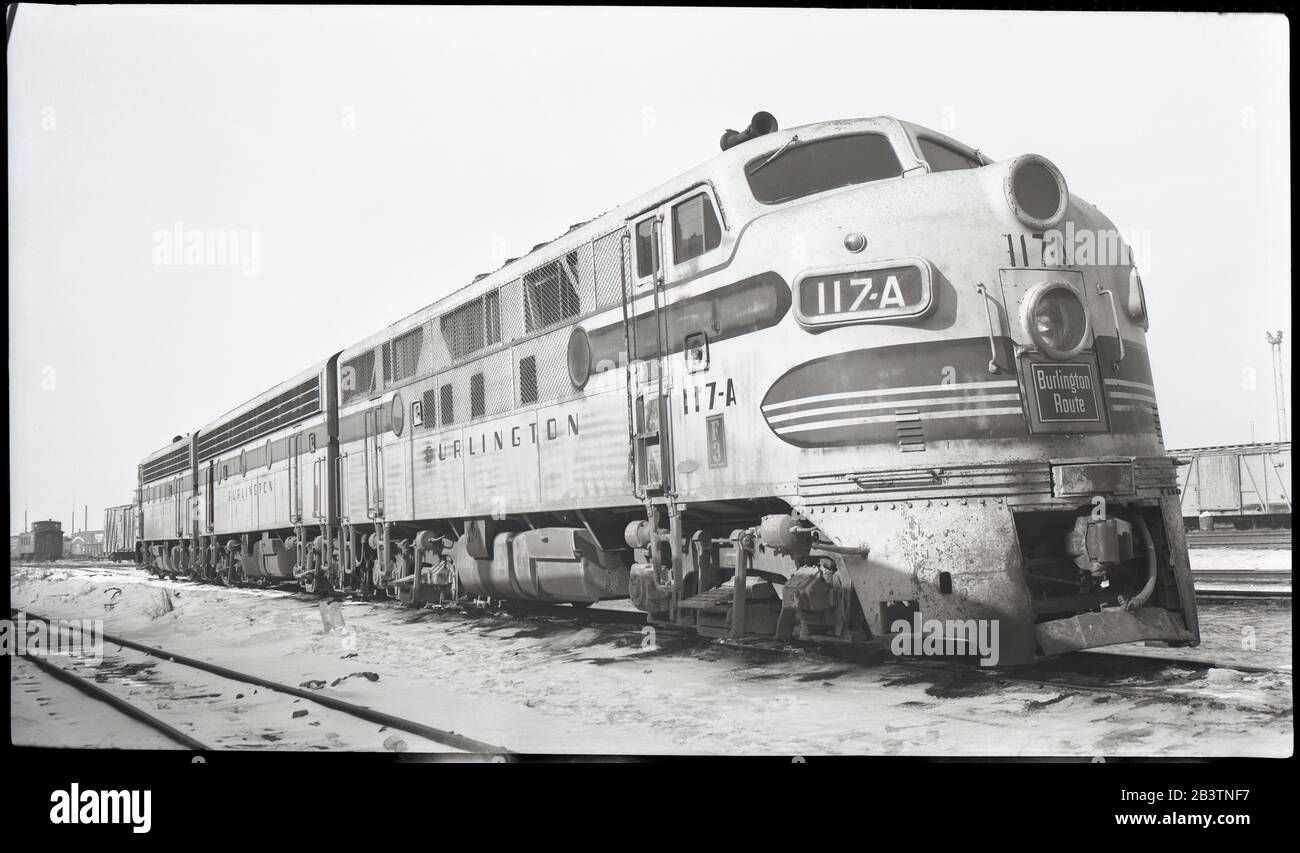
The Burlington Route: An American Legacy of Steel and Innovation
CHICAGO, IL – In the annals of American industrial might and the romantic saga of the iron horse, few names resonate with the enduring power and pioneering spirit of the Chicago, Burlington & Quincy Railroad. More affectionately known as the "Burlington Route" or simply "the Q," this Midwestern titan, for over a century, was more than just a network of tracks and trains; it was a vital artery of commerce, a beacon of innovation, and a symbol of progress that shaped the economic and social landscape of a nation.
From its humble beginnings as a short line connecting Aurora to Chicago in the mid-19th century, the CB&Q blossomed into an eleven-thousand-mile empire stretching across 14 states, linking the Great Lakes to the Rocky Mountains, and the Mississippi River to the Gulf Coast. Its legacy, though formally absorbed into Burlington Northern in 1970, continues to echo through the modern BNSF Railway, a testament to its strategic foresight and unwavering commitment to excellence.

The Genesis of a Giant: Forging the Midwest’s Backbone
The story of the Burlington Route begins in 1849 with the incorporation of the Aurora Branch Railroad, a modest line aimed at bringing the agricultural bounty of Illinois to the bustling markets of Chicago. Renamed the Chicago, Burlington & Quincy Railroad in 1856, the company rapidly expanded, not through lavish land grants often associated with transcontinental lines, but through shrewd financial management, strategic acquisitions, and diligent construction.
"The early Burlington understood the pulse of the American heartland," notes railroad historian David P. Morgan. "They weren’t just building tracks; they were building communities, connecting farmers to markets, and factories to resources. Their growth was organic, driven by demand."
By the 1870s, the Q had solidified its position as a dominant force in the Midwest, its lines radiating from Chicago to major hubs like Quincy, Illinois; Burlington, Iowa; and St. Joseph, Missouri. It became a master of freight, hauling vast quantities of grain, livestock, and coal – particularly from the rich coalfields of Illinois and later Wyoming. Its financial stability was legendary, allowing it to weather economic downturns that crippled lesser roads.
One of the most significant periods of expansion came under the influence of the legendary railroad magnate James J. Hill, who gained control of the CB&Q in 1901 as part of his strategy to create a transcontinental system by linking his Great Northern and Northern Pacific roads to the Q’s extensive Midwestern network. This strategic alignment, though later legally challenged, solidified the Burlington’s position as a key player in the national rail system, extending its reach to Denver, St. Paul, and Kansas City.
The Dawn of the Diesel Age: The Zephyr Revolution
While its freight operations provided the financial bedrock, it was in passenger service that the Burlington truly captured the public imagination, especially during the challenging years of the Great Depression. As the nation grappled with economic despair, the railroad industry, too, faced existential threats from nascent air travel and the burgeoning interstate highway system. Innovation was not just desired; it was essential for survival.
Enter Ralph Budd, president of the CB&Q from 1932 to 1949, a visionary who understood that the future lay in speed, efficiency, and a captivating public image. He looked beyond the traditional steam locomotive to a revolutionary new form of motive power: the diesel-electric.

On May 26, 1934, the world witnessed the birth of a legend: the Pioneer Zephyr. This sleek, stainless-steel, articulated train, built by the Budd Company, was unlike anything seen before. Powered by a single Winton 201A diesel engine, it was a striking departure from the heavy, smoke-belching steam engines of the era. To prove its mettle, the Pioneer Zephyr undertook a record-breaking "Dawn to Dusk" run from Denver to Chicago, covering 1,015 miles in 13 hours and 5 minutes, averaging 77.6 miles per hour and hitting a top speed of 112.5 mph.
The run was a sensation. "It was more than just a train; it was a symbol of hope and American ingenuity," wrote one contemporary journalist. "In an era of stagnation, the Zephyr was pure motion, a silver bullet against the gloom." The Pioneer Zephyr single-handedly ushered in the "Diesel Age" for American railroads, proving the viability and efficiency of the new technology.
The success of the Pioneer Zephyr led to an entire fleet of "Zephyr" trains: the Twin Cities Zephyrs, the Nebraska Zephyr, and most famously, the Denver Zephyr, which offered overnight service between Chicago and Denver, embodying luxury and speed.
The Golden Age of Passenger Rail: The California Zephyr
The Burlington Route’s commitment to passenger excellence reached its zenith in the post-World War II era with the introduction of the California Zephyr. Launched in 1949 as a joint venture with the Denver & Rio Grande Western and the Western Pacific railroads, the CZ quickly became known as "the most talked about train in America."
What made the California Zephyr legendary were its revolutionary Vista-Dome cars. These glass-enclosed upper levels offered passengers panoramic views of the spectacular scenery along its route, particularly through the Colorado Rockies and the Sierra Nevada. It wasn’t just transportation; it was an immersive travel experience.
"The Vista-Dome cars transformed the journey into a spectacle," remarked a passenger in a 1950s travelogue. "You weren’t just going from point A to point B; you were witnessing America unfold before your eyes, a moving picture show of unparalleled beauty." The CZ represented the pinnacle of luxury passenger rail, offering fine dining, attentive service, and a level of comfort that made long-distance travel a pleasure.
While passenger numbers began to decline in the 1950s due to the rise of commercial aviation and the interstate highway system, the Burlington maintained its commitment to quality service longer than many other railroads, a testament to its brand loyalty and the enduring appeal of its Zephyr fleet.
Freight Prowess and Operational Excellence
Beyond its glamorous passenger trains, the Burlington’s core strength always lay in its robust and diversified freight operations. The "Q" was renowned for its efficiency and forward-thinking approach to freight movement. It was an early adopter of technologies like centralized traffic control (CTC), advanced signaling systems, and sophisticated yard operations, all aimed at moving goods faster and more reliably.
The railroad played a crucial role in the development of the agricultural Midwest, transporting grain from vast farmlands to processing centers and ports. Its coal traffic, particularly from the Powder River Basin in Wyoming, became increasingly vital in the latter half of the 20th century, cementing its role as a key energy transporter. The Burlington also excelled in merchandise traffic, connecting industrial centers with burgeoning consumer markets.
"The Burlington was a well-oiled machine," commented a former CB&Q freight conductor. "They invested in their infrastructure, their locomotives, and their people. They knew how to move things, efficiently and safely, and that’s why they were so successful."
The End of an Era: The Merger and Enduring Legacy
As the 1960s drew to a close, the American railroad industry was in a period of significant consolidation. Facing increasing competition and a complex regulatory environment, many roads sought strength in mergers. The Chicago, Burlington & Quincy Railroad, along with the Great Northern Railway, the Northern Pacific Railway, and the Spokane, Portland and Seattle Railway, embarked on one of the largest mergers in U.S. railroad history.
On March 2, 1970, these four venerable railroads officially merged to form the Burlington Northern Railroad (BN). The iconic "Burlington Route" ceased to exist as an independent entity, its identity subsumed into a much larger network. While the name changed, the spirit and much of the operational excellence of the Q lived on. The BN, and later the BNSF Railway (formed in 1995 through the merger of Burlington Northern and Santa Fe), inherited the CB&Q’s extensive trackage, its strategically important routes, and a legacy of innovation.
Today, trains bearing the BNSF Railway logo still thunder along former Burlington tracks, carrying the lifeblood of the American economy. The Pioneer Zephyr is preserved at the Museum of Science and Industry in Chicago, a gleaming monument to a bygone era of innovation. The spirit of the California Zephyr lives on in Amtrak’s daily service, traversing much of the original scenic route.
The Chicago, Burlington & Quincy Railroad was more than just a transportation company; it was a cornerstone of American progress. It built a network that fueled economic growth, pioneered technologies that revolutionized an industry, and offered a travel experience that captured the nation’s imagination. Its story is a powerful reminder of the enduring impact of vision, enterprise, and the timeless allure of the rails that knit a continent together. The Burlington Route, the "Q," may be gone, but its indelible mark on the landscape of American history continues to roll on.


